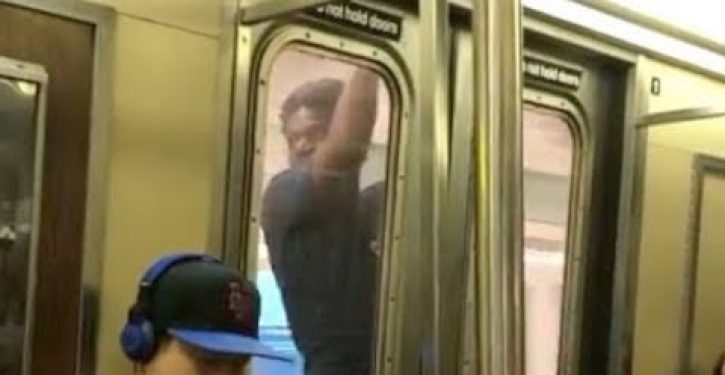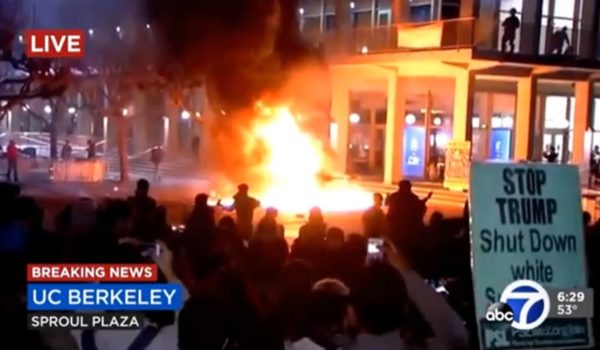
The subway and bus system in the Washington, DC area will cut hours of service and perhaps lay off over 2000 employees to cope with a massive budget deficit resulting from bad management and lower ridership. Ridership has fallen due to post-pandemic increases in remote work and people avoiding Washington, DC, due to its rising crime rate. This year, DC’s murder rate has risen 34% and violent crimes have risen by 40%. In Washington, DC, fewer than half of employees have returned to the office since the pandemic, a lower percentage than in nearby safer suburbs such as Arlington and Alexandria.
Bloomberg News reports that the Washington Metropolitan Area Transit Authority is
forecasting thousands of layoffs and service cuts to plug a $750 million budget hole…in an updated financial plan to its board on Thursday, according to a Monday briefing with reporters. WMATA, which serves more than 600,000 daily customers, runs the metro [subway] and buses in the District of Columbia and the surrounding areas in Maryland and Virginia.
The agency says it will have to cut its 12,000 person work force by nearly 20% or about 2,300 people, a reduction that would lead to dirtier stations, a drop in safety and security measures and reliability issues across its network. On top of the staffing cuts, WMATA is considering slashing service, including eliminating or reducing service on 108 of its 135 bus lines. The rail system, which currently runs until midnight most days, will cease operations at 10 p.m. impacting as much as six million customer trips, the agency said….
The agency is expecting a $750 million shortfall starting next summer that is anticipated to balloon to $1.2 billion by fiscal year 2035…To close the upcoming budget hole for the fiscal year that starts in July, the agency plans on transferring $193 million from preventative maintenance to fund operations [and making] $433 million of service reductions, layoffs and fare hikes.
Clarke … called on the federal government to allocate more dollars to help with operations.
The agency has $17 billion of capital needs over the next six years, but will only be able to satisfy about two-thirds of that. Some of the projects that will be impacted by the delays include transitioning to electric buses, adding new stations to various rail lines and building a new bus garage.
As subway trains and buses get emptier and emptier, the argument for subsidizing the subway system weakens. As Kevin Libin notes in The National Post, “Mass transit vehicles use up roughly the same energy whether they are full or empty, and for much of the time, they’re more empty than full. For the bulk of the day, and on quieter routes, the average city bus usually undoes whatever efficiencies are gained during the few hours a day, on the few routes, where transit is at its peak.”
Mismanaged mass transit systems try to blame COVID for all their problems. But as Reason’s Steven Greenhut observes, their problems long predate the pandemic:
Transit agencies were struggling long before anyone had heard of COVID-19. Ridership levels in almost every major transit system nationwide had been plunging for two decades. The agencies have had plenty of time to adjust to reality, but have not used it to develop new business models that appeal to riders. They haven’t even turned the corner on transit crime waves that literally scare off riders. Instead of cutting superfluous bureaus or staff….or trying innovative solutions (smaller buses, privatized alternatives), they’ve continued to offer these services in an antiquated way….
The Biden administration is blind to the wastefulness of many mass transit systems. It wants to spend $500 million on expanding a subway system whose ridership is tiny and is falling compared to the local population.
Even worse, the Biden administration also wants to spend $8.8 billion expanding D.C.’s Union Station, which handles only a small fraction of the traffic it used to. The subway line that runs through Union Station has far fewer users than before the pandemic, as do the commuter rail lines running through Union Station. As of June 2023, Virginia Railway Express ridership was only a third of its 2019 levels. Its average rail car is only about 40 percent full on a weekday.Rail ridership will probably never return to pre-pandemic levels, because of the rise in remote work.
Trying to get people to ride mass transit systems was difficult even before the rise of remote work, because it takes so long to commute to and from work on mass transit. It can take an hour and a half to take buses or trains to work for a commute that would take only half an hour by car. Most train and bus stations are not right near where people live or work, and people taking mass transit often have to ride multiple different buses or trains to get to work.



